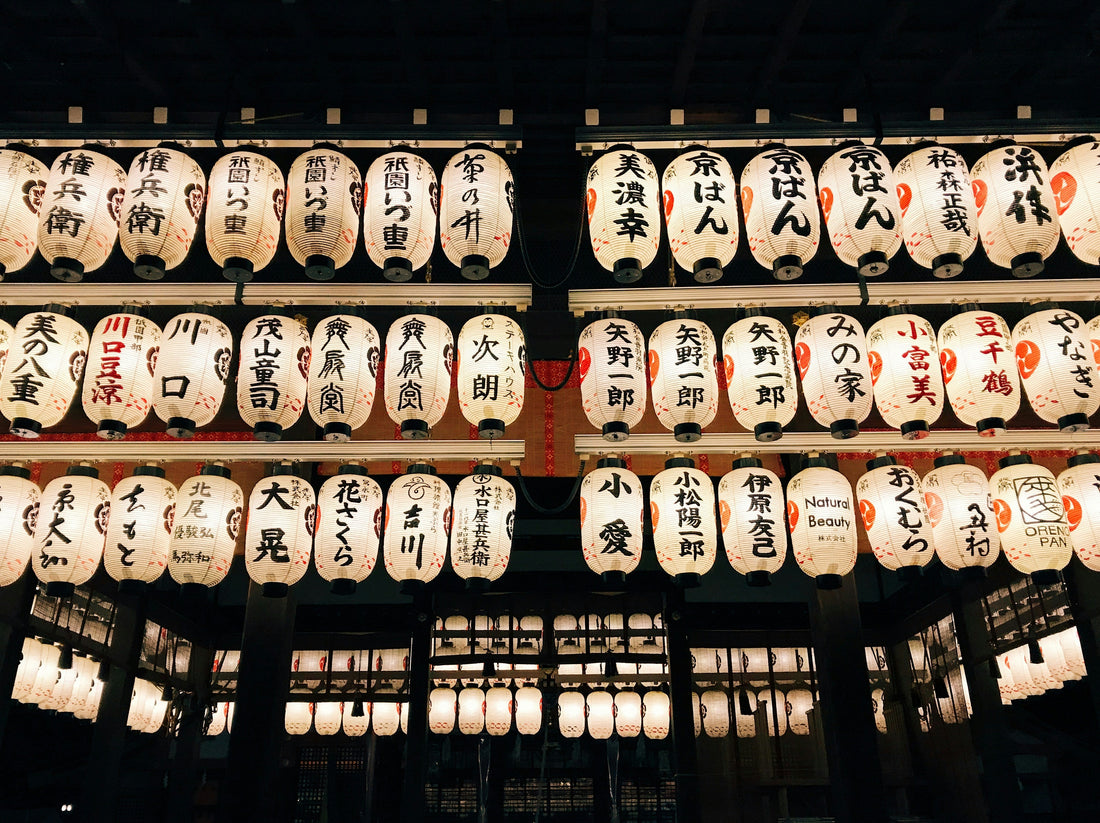
🏮 The Hidden Meanings of Kyoto’s Lanterns: From Temples to Festivals
Share
When you wander through Kyoto—whether it’s the quiet alleys of Gion, the grand gates of Yasaka Shrine, or the dazzling streets during Gion Matsuri—you’ll notice lanterns glowing softly, guiding your way. More than just beautiful decorations, lanterns in Kyoto carry deep cultural and spiritual meaning.
Let’s explore their hidden symbolism and how you can experience them throughout the year.
✨ The Symbolism of Lanterns in Japan
Lanterns, or chōchin (提灯), are more than sources of light. Traditionally, they are believed to ward off evil, invite good fortune, and honor the spirits. Their gentle glow creates a sacred atmosphere, turning ordinary streets and temples into spaces of reflection and connection.
Red lanterns often symbolize protection and are common at shrines and izakaya.
White lanterns are seen during festivals and represent purity.
Gold or decorated lanterns are reserved for major ceremonies, often carrying family crests, shop logos, or shrine emblems.
🛕 Lanterns at Temples & Shrines
In Kyoto’s many shrines and temples, lanterns serve both practical and spiritual roles:
Stone Lanterns (Ishi-dōrō) – Found along temple paths, they symbolize guidance, illuminating the way to sacred spaces.
Paper Lanterns (Chōchin) – Often inscribed with the name of a shrine, temple, or donor, these lanterns are lit during rituals and festivals to honor deities and ancestors.
Wooden Lanterns – Larger, often permanent, structures that line shrine entrances, setting the tone for worshippers.
📍 Where to see them: Yasaka Shrine, Kennin-ji Temple, and Fushimi Inari Taisha are famous for their lantern-lined approaches.
🎉 Lanterns in Festivals
Festivals in Kyoto transform lanterns into symbols of community and celebration.
Gion Matsuri (July): Enormous yamaboko floats are lit with lanterns, turning Kyoto’s streets into glowing rivers of light.
Arashiyama Hanatōro (December): The bamboo forest and riverbanks are illuminated with thousands of lanterns, creating one of Kyoto’s most magical winter scenes.
Obon (August): Families light lanterns to guide ancestral spirits back home, ending with floating lanterns (tōrō nagashi) on rivers.
🚶 Lanterns in Kyoto’s Streets
Outside of temples and festivals, lanterns are part of daily life in Kyoto.
Gion’s Alleyways: Small red lanterns mark teahouses and izakaya, glowing softly as you wander at night.
Traditional Shops: Many long-standing businesses still display lanterns with family crests or trade symbols.
Seasonal Light-ups: From Higashiyama Hanatōro to temple illuminations, lanterns create a romantic, timeless atmosphere perfect for evening strolls.
🌟 How to Experience Lantern Culture
-
Visit temples and shrines at dusk – the atmosphere shifts dramatically once lanterns are lit.
-
Plan around a lantern festival – Gion Matsuri or Hanatōro offer the most breathtaking views.
-
Stay in a machiya townhouse or ryokan – many use lanterns to welcome guests, continuing the tradition.
-
Bring home a small lantern charm – some shrines sell miniature lantern omamori as souvenirs.
✨ Final Thought
In Kyoto, lanterns are more than just lights. They are symbols of protection, guidance, and community, connecting everyday life with spirituality. Whether flickering quietly at a shrine or glowing brightly at a festival, lanterns remind us that light has always been at the heart of Kyoto’s culture.
So next time you stroll through Kyoto at night—pause, look up, and let the lanterns guide your journey.
